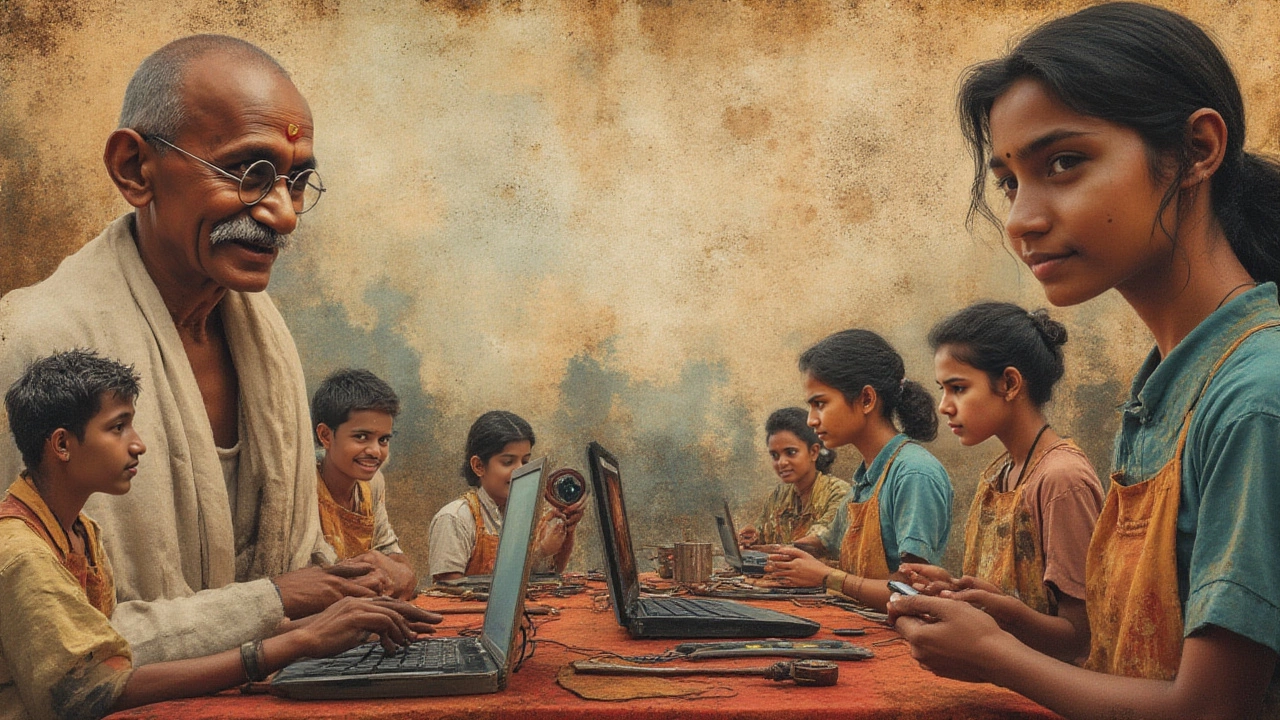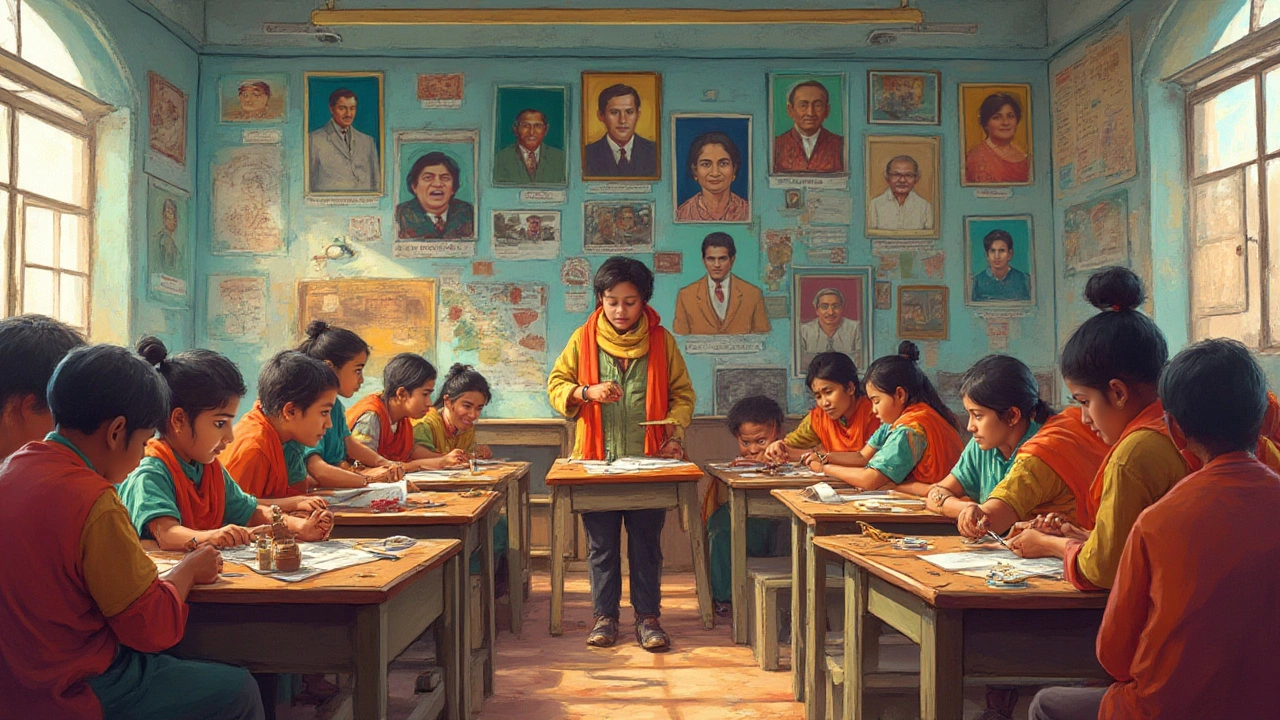If you look at today’s classroom debates, you’ll see people split between theory and skills. But here’s something you might not know: two centuries ago, nobody took vocational education seriously. Now, some high schools look more like electrical workshops or digital studios than old-fashioned classrooms. What changed? Who decided ‘hands-on’ wasn’t just for people who “couldn’t handle” academics?
Key Figures Who Sparked the Rise of Vocational Education
Let’s get real: the shift from textbook-only learning to skills-based education didn’t just “happen.” Early on, one of the loudest voices was Horace Mann. A Massachusetts reformer way back in the 1800s, Mann didn’t just push for free public schools, he pushed to make them useful. He believed in “education as preparation for life, not just for college.” And he wasn’t alone—on the other side of the globe, Friedrich Froebel (the dude who started kindergarten!) wanted kids working with their hands from the start. Froebel insisted, “Learning by doing is the best way to understand.” Vocational learning wasn’t always about blue-collar jobs, either. Booker T. Washington, born into slavery and later founder of the Tuskegee Institute, fought for practical skills because he knew real-world ability opened doors that racism tried to keep shut. Under his leadership, Tuskegee turned out thousands of students trained in agriculture, carpentry, and mechanics.
But it took a world on the brink—literally—to really drive the point home. In 1917, just as the United States entered World War I, Congress passed the Smith-Hughes Act, channeling federal money directly into vocational education for the first time. Suddenly, technical schools were everywhere, training mechanics, electricians, and welders who kept the war effort humming. Eleanor Roosevelt later called the move “the most significant educational legislation of its era.” It wasn’t just about making stuff; it was about moving up. Countries like Germany doubled down, designing well-funded apprenticeship programs and technical schools. Post-war Japan followed suit—after World War II, they moved from an agrarian economy to a jam-packed urban tech powerhouse by bankrolling vocational training for millions.
In Asia, India’s Mahatma Gandhi was no stranger to skills training, pushing his ‘Nai Talim’ philosophy: education should involve ‘head, heart, and hands.’ Even today, China’s megacities have “dual-track” programs—young people split weeks between state-of-the-art workshops and school lectures. Flip over to Finland: their international test scores are among the highest, but half of teenagers choose a vocational route and trade schools are as respected as universities. When Rocky—my dog—chews up the electric wires for the third time, I’m lowkey glad a local teenager had the hands-on skills to save my home from total blackout.
Certainly, the corporate world saw the payoff. BMW in Germany and Tata in India have million-dollar training academies that blur the lines between classroom and factory floor. According to UNESCO’s 2021 global skills report, over 80% of countries now fund at least one national-level vocational training program. That’s a big turnaround from the past, when ‘shop class’ was where people got sent if they “couldn’t hack it” in math.

Changes in Policy and Public Perception
The shift from “vocational training as Plan B” to “necessary for the modern workforce” is one of education’s biggest face-lifts. Who made that happen? Politicians and policymakers, for sure, but also waves of social pushback. Back in the 1950s and 60s, as white-collar office jobs boomed in America, blue-collar work saw its own kind of pride movement. President Lyndon B. Johnson’s Great Society legislation pumped major federal funds into technical colleges. In 1983, the National Commission on Excellence in Education published the hard-hitting report “A Nation at Risk.” It warned,
"The educational foundations of our society are presently being eroded by a rising tide of mediocrity."This wasn’t just about reading and math—it was a wake-up call for practical, skills-based education.
But it’s not just the U.S. look at South Korea. When the country needed to recover after the Korean War, the government made vocational education a pillar of its economic miracle. Technical high schools started producing engineers and tech wizards at record speed. By the 1990s, kids in Seoul were learning robotics as early as tenth grade. This huge mindset flip helped fuel the “Korea Inc.” economy, taking it from rice paddies to high-speed trains in two generations.
Europe also set the tone. Germany’s “dual system”—where teens split their time between company training and school—became a model. More than 50% of young Germans don’t go straight to university; instead, they enter apprenticeships with big-name employers. These programs aren’t a fallback. In fact, a 2022 OECD survey found that 89% of parents in Switzerland and Austria said they would “encourage their child to take a vocational path.”
Let’s not skip the stats. Check out this quick look at how countries prioritize vocational training:
| Country | Vocational Students (%) | Average Govt. Funding (USD per pupil/year) |
|---|---|---|
| Germany | 52 | 13,900 |
| Finland | 44 | 11,700 |
| United States | 30 | 9,600 |
| South Korea | 38 | 8,200 |
| India | 23 | 3,100 |
Shifting perceptions also owes a ton to employers. For years, CEOs grumbled about college grads who couldn’t change a fuse. So, places like Google, Bosch, and Siemens built their own “corporate universities” with hefty skill components. Some even skip looking at university degrees on a résumé, focusing more on certifications or portfolios that prove someone can actually solve real—sometimes very dirty—problems.
There’s also the image makeover. Instead of calling programs “trade school”—which sometimes felt like a step down—places started using phrases like “technical college” or “STEM academies.” It’s marketing, sure, but language shapes reality. By making “vocational education” sound valuable, schools and companies slowly chipped away at its old stigma. Today, TikTok and Instagram are packed with influencers showing off their welding or culinary skills, racking up more views than old-school lectures ever did.

How Vocational Education Shapes the Future
So now we’ve got a scene where students aren’t shamed for picking up a wrench. Why does that matter? For starters, traditional university degrees aren’t golden tickets anymore. Recent LinkedIn hiring data show that certificates in coding, automotive technology, or even green energy jobs are snagging interviews right alongside four-year degrees. Employers want proof of skill. That’s where vocational education steps in.
The workplace is changing at warp speed. When I was in school, being “good with computers” meant you could set up Wi-Fi. Today, a typical 17-year-old in a vocational program might be building apps or servicing solar panels. The rise of green energy jobs is wild—there’s a mad dash to teach people how to maintain wind turbines and install smart-home systems. And here’s a fun tip: Welding used to be a “guy thing,” right? Not anymore. In places like Canada and Australia, female enrollment in skilled trades has doubled in the past decade.
If you’re choosing a path, don’t ignore where the world’s going. Experts project that by 2030, nearly two-thirds of all jobs will need some form of technical training—not just a fancy degree. Want a stable, decent-paying gig? The “learn by doing” crowd is already there. According to a 2024 survey by the World Economic Forum, 78% of employers see vocational credentials as equal or higher in value compared to traditional degrees, especially in tech, healthcare, and advanced manufacturing.
What should a student do today? A few tips:
- Vocational education isn’t a fallback for people “not academic”—it’s a fast lane to in-demand skills (and often, less student debt).
- Check local apprenticeship programs—plenty of them pay you to learn, and they lead straight into jobs.
- If you’re already in school, try a hybrid route: take hands-on electives even if you plan to go to college. It’ll set you apart.
- Keep an eye on where governments are spending money. Big funding for green jobs, healthcare tech, and digital trades usually means lots of opportunity.
- Don’t let anyone talk you out of a path just because it’s “not university.” Most new high-tech roles start with a skill, not a degree.
I see it every day—kids doing internships, building real stuff, and skipping the years of “figuring it out” in lecture halls with no clear payoff. As the gaps in skilled trades get bigger, the value of vocational training will only keep climbing. Sometimes, the old idea that “practical learning matters” turns out to be the most modern take you can get. And when Rocky starts chewing through a brand-new Wi-Fi cable again? I’m calling up one of those local tech apprentices—probably faster, definitely less expensive, and hey, sometimes more reliable than the neighbor with the engineering degree he never uses.
